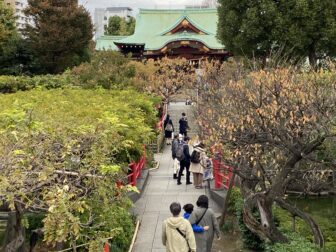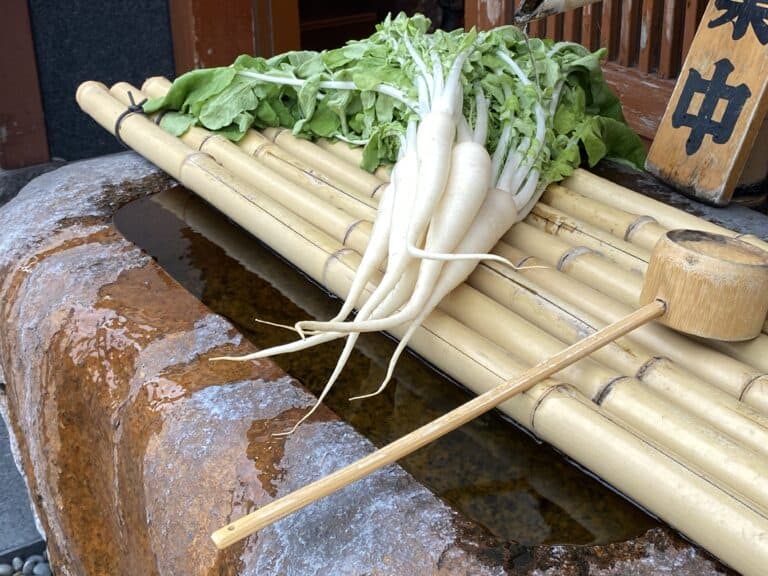
[Nov. 2023] At the invitation of a friend of ours who lives in Tokyo, Japan, we went for a walk around Kameido, a part of downtown Tokyo, which she had never walked before, either.
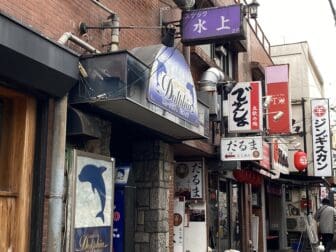
We met at the station and first walked down a street that looked like a traditional Japanese bar alley.
It was still mid-morning, so it looked deserted, but I’m sure it will be very lively in the evening.
A restaurant called Masumoto, which is located on the main street from here, is a restaurant that our friend always uses as a caterer.
She couldn’t make a reservation, but since it was still before 12:00, we were easily shown to a table.
The dish for this day was to choose from three types of clam hot pot.
We were instructed that we should pour the ingredients in the pot over barley rice and eat.
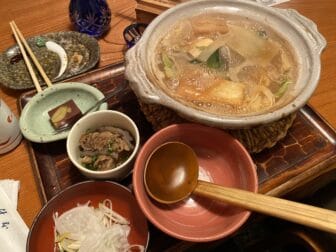
The set we chose came with pickles and stewed beef.
It tasted very good.
The radish seemed to be special and was included in every dish.
The sake is served in Edo Kiriko Tokkuri and Ochoko.
Chestnut yokan came with the dessert, but my friend gave a harsh review saying, “This is just normal.”
After meal, I received a pamphlet called “Kameido Daikon Story” and learned about what makes this daikon (radish) so special.
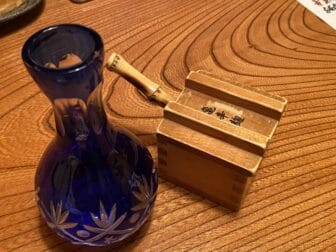
First of all, it is said to be the smallest radish in Japan.
It was developed in the 1860s and was actively cultivated during the Meiji and Taisho periods (1868 ~ 1926).
However, as the economy grew in the Showa era (1926 ~ 1989), farmland became residential and industrial land.
At the same time as the number of radish farmers decreased, the type of radish that could be sold changed, so Kameido daikon became a “phantom radish.”
It says that Masumoto has revived that tradition and continues to protect the traditional vegetable together with contracted farmers across the country.
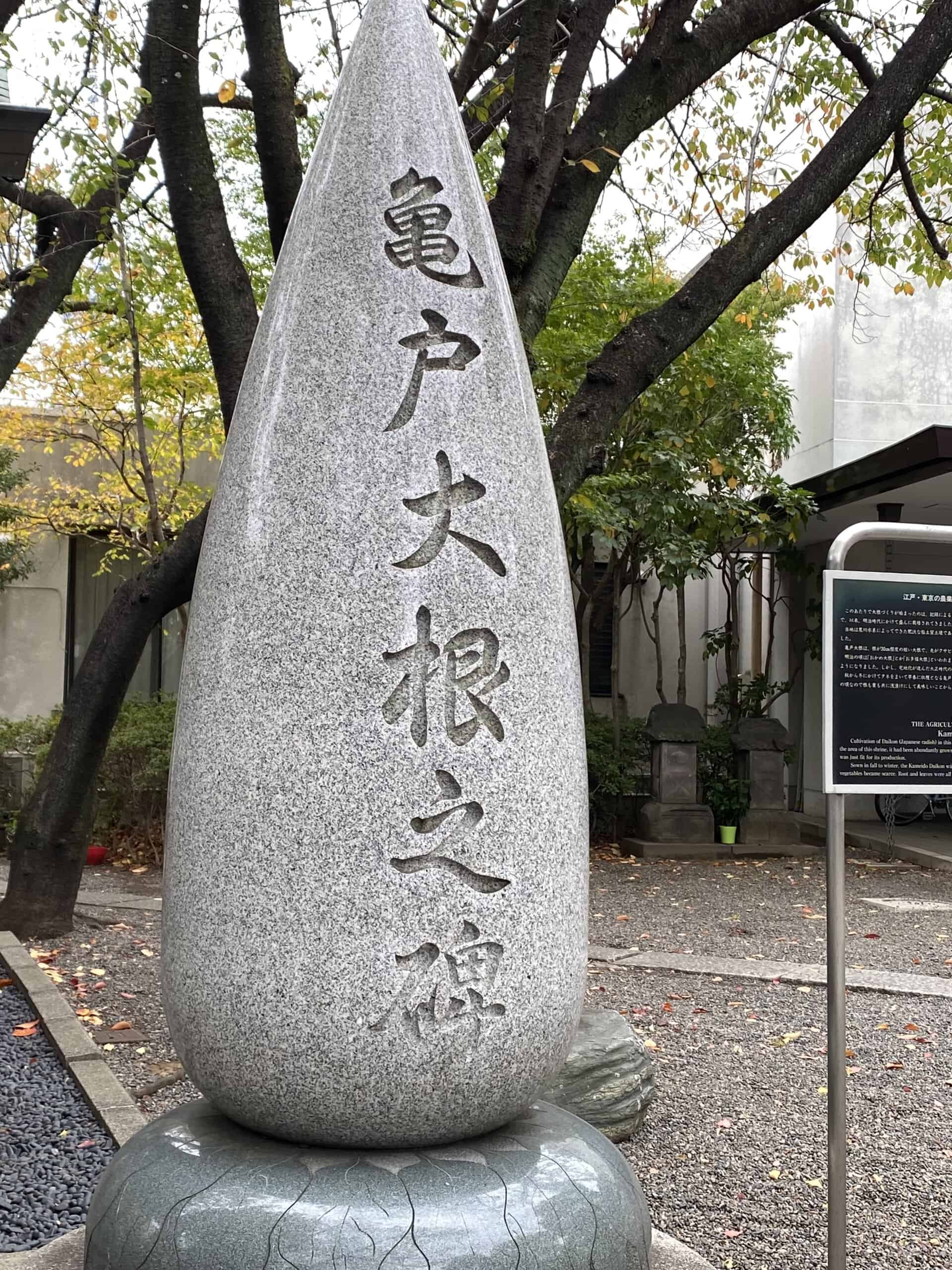
By the way, this daikon radish has a stronger sweetness than regular daikon radish and is said to contain more vitamin C.
There was a bunch of daikon radish displayed in front of the entrance of the restaurant, and there was a sign saying that “sprinkling water on it may bring good fortune”, so one by one we poured water on it.
We also went to Katori Shrine, where there is a Kameido Daikon monument commemorating the place where it originated.
In Europe, where we live, we hardly ever eat daikon radish, though.
It seems that the god of sports is enshrined at Katori Shrine, and on the votive tablets, I saw many wishes like “I hope XX wins at the Paris Olympics.”


